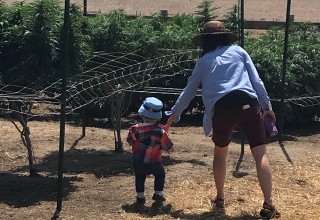Open Letter From Save Our Sonoma Neighborhoods: How Sonoma County Fouled Up Planning for Cannabis Cultivation
SONOMA, Calif., April 4, 2019 (Newswire.com) - The following is an open letter from Craig S. Harrison, retired environmental lawyer, a founding member of Save Our Sonoma Neighborhoods and president of the Bennett Valley Community Association.
Save Our Sonoma Neighborhoods is a coalition of concerned Sonoma County residents dedicated to representing neighborhoods in lobbying the county for the common-sense cultivation of commercial marijuana and taking a stand against commercial cannabis.
Sonoma County’s marijuana cultivation program is a disaster. There are severe compatibility problems in rural neighborhoods where cannabis cultivation makes no sense. The supervisors failed from the outset when they decided that pot cultivation is somehow “special” and turned the planning process upside down. There are innumerable problem sites and even if all of the permits proposed at such sites were denied, more problem applications will appear.
Proper planning would identify sites that are suitable based on planning criteria. It would not allow cultivation most anywhere and not identify problem sites until the permit process. That is how all other planning is done. When the County prepares its General Plan and Zoning Maps, planners identify those areas where specified uses are environmentally suitable and compatible with surrounding uses. They identify commercial zones, industrial zones, multi-residential zones (apartments and condos) and residential zones. Areas not so identified do not allow any of these uses.
The County should return to normal zoning. It should evaluate environmental and land use information and identify areas where cannabis grows are suitable based on such criteria as:
· availability of public water and other services such as power, sewer, stormwater drainage;
· groundwater basins where water use will not impact the environment;
· adequate and safe road access;
· avoiding incompatible residential sites;
· avoiding schools;
· avoiding parks, children's camps, trails and recreation sites;
· accessibility to law enforcement;
· avoiding high danger of wildfire;
· avoiding landslides, flooding and other natural hazards;
· avoiding endangered or sensitive species;
· avoiding historic and/or archaeological resources;
· avoiding important wildlife habitat and corridors.
Once areas meeting these criteria are mapped, planners normally assess how much suitable land can be projected as reasonably necessary to meet current and future demand. The proposed suitable areas are then evaluated in public hearings and after considering public comment, the planners select those areas where permits for grows will be considered.
Individual proposals are then evaluated to make sure that they meet all of the necessary criteria. They go through the conditional use permit and environmental assessment processes where the public has an opportunity to provide comment.
The County's failure to undertake normal planning is why it has controversial grows in unsuitable areas. The County has never before done planning for any other land use by requiring residents to identify problem sites after a permit process is underway. The County’s approach is like allowing anyone to locate a junkyard anywhere unless enough neighbors complain.
The supervisors should never have assigned the planning effort to the economic development department instead of the permit department. Economic development departments never have the expertise to manage land use planning for cannabis grows or anything else.
The County’s biggest error was to assume that marijuana grows are "just agriculture." That's like saying pig farms are "just agriculture." Most of the remote places proposed for commercial cannabis cultivation would normally only accommodate "extensive agriculture." Perhaps a few cattle at best. Growers use imported soil and heated containers in commercial structures with artificial lighting, none of which is normal agriculture.
Once the County assumed cannabis production is the equivalent of a vegetable garden and ignored the huge water use, fire hazards, multiple employees, traffic, pesticide use, noxious odors, crime and a plethora of other impacts that of necessity accompany cannabis production, the planning process went awry.
To address adequately the compatibility problems with rural neighborhoods, the county supervisors need to acknowledge the impacts and quit trying to fit the round cannabis peg in the square "just agriculture” hole.
CONTACT:
Craig S. Harrison
craigspencerharrison@gmail.com
About Craig S. Harrison
Craig S. Harrison is a retired environmental lawyer. He holds degrees from U. C. Berkeley (Biochemistry), Humboldt State University (MA Biology) and the University of Hawaii (J.D.). He was a founding board member of the American Bird Conservancy and is president of the Bennett Valley Community Association. He is also the author of "Seabirds of Hawaii: Natural History and Conservation" (Cornell U. Press) and enjoys viewing wildlife in remote parts of the planet.
Source: Save Our Sonoma Neighborhoods




